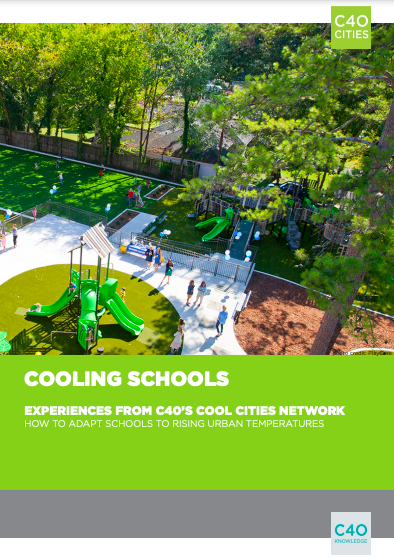Cooling schools: Experiences from C40’s Cool Cities Network
Organization: C40
Year: 2021

In cities that experience extreme heat, children are particularly vulnerable. Cooling school buildings increases children’s thermal comfort and creates a better learning environment, while schoolyards with shaded areas encourage children to play outside and increase physical activity in breaks. As municipally-owned buildings, schools can also function as demonstration projects for cooling features on buildings, and can act as cooling centres for the public outside of school hours during heatwave periods.
This short report provides recommendations and case studies from six cities that are implementing measures to cool their schools – Accra, Barcelona, London, Madrid, Paris and Rio de Janeiro, all members of C40’s Cool Cities Network.
The recommendations from these cities are:
- Prioritise schools located in heat-vulnerable areas.
- Ensure close collaboration between municipal or regional/national departments for successful planning and implementation of schools’ climate adaptation projects.
- Secure funding and assign clear roles and responsibilities to professional maintenance partners to keep green infrastructure in schoolyards alive.
- Involve the whole school community in the design and implementation of the projects, including students, teachers, parents, neighbours and school staff.
- Incorporate passive cooling for school buildings, like shading, cool roofs, wind circulation, green roofs and walls to save energy.
- Promote nature-based solutions as they generate multi-benefits including for cognitive and social development, students’ wellbeing, rainwater regulation and more, as well as reducing heat.
- Favour low-tech, local, and natural materials for schoolyard designs, like wood, grass, and sand.
- Piggyback onto school upgrade and funding opportunities that are already planned to include climate adaptation criteria.
- Start with pilot projects that can then be scaled-up across schools city-wide.